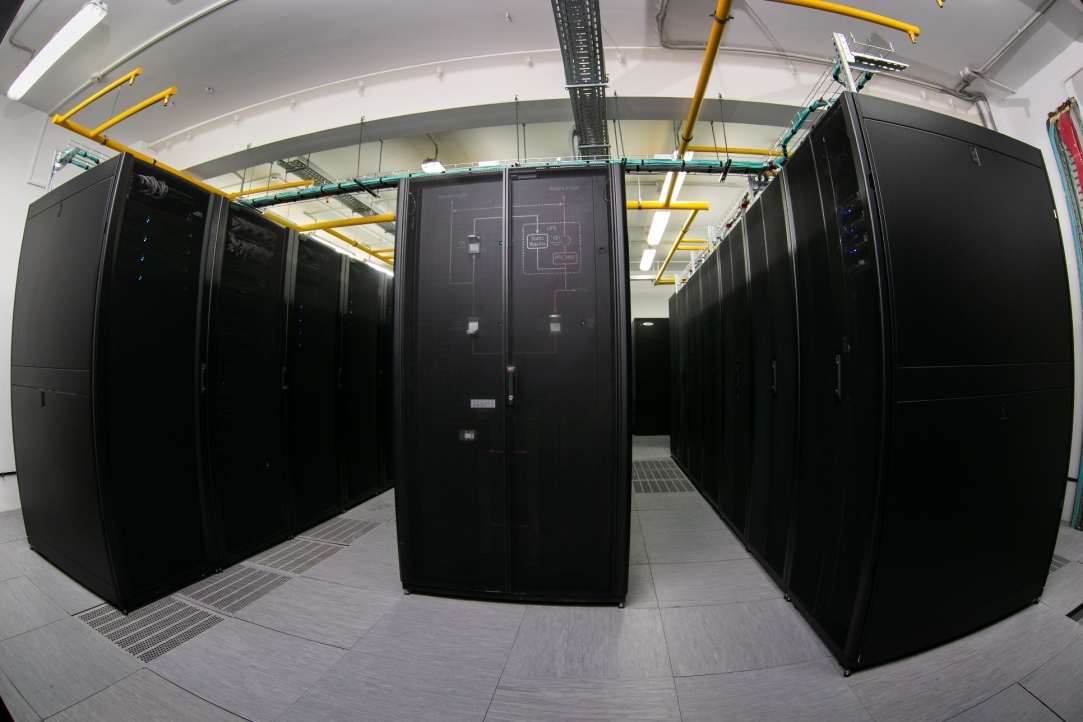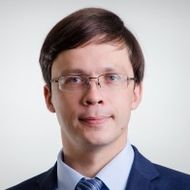HSE Supercomputer Doubles Its Performance

The peak performance of the HSE cHARISMa supercomputer has doubled, reaching 2 petaflops (2 quadrillion floating-point operations per second). HSE University now outperforms the Kurchatov Institute in terms of computing power. The only more powerful university computers are MSU’s Lomonosov-2 and SPbPU’s Polytechnic. Thanks to the timely upgrade, cHARISMa has retained its respectable 6th position among the Top 50 most powerful computer systems in the CIS for three years.
Russian research institutions and small industrial companies aren’t the only ones using supercomputers: large businesses also take advantage of the technology. Business giants such as Sberbank and MTS now lead the Top 50 list of CIS supercomputers. Companies with high-performance clusters and the ability to teach AIs faster and more efficiently than their rivals enjoy significant competitive advantages in the market. The doubled operation efficiency of the HSE supercomputer proves that HSE University is keeping up with the times.
Russian research institutions and small industrial companies aren’t the only ones using supercomputers: large businesses also take advantage of the technology. Business giants such as Sberbank and MTS now lead the Top 50 list of CIS supercomputers. Companies with high-performance clusters and the ability to teach AIs faster and more efficiently than their rivals enjoy significant competitive advantages in the market. The doubled operation efficiency of the HSE supercomputer proves that HSE University is keeping up with the times.
HSE University launched its high-performance cHARISMa (Computer of HSE for Artificial Intelligence and Supercomputer Modelling) cluster at the beginning of 2019. The cluster is designed to support fundamental and applied research in computer modelling, big data analyses, machine learning and more. cHARISMa also helps teachers and students to conduct research projects and experiments that require the use of supercomputer systems. Thanks to the supercomputer, HSE University receives new grants and completes high-tech research projects. Over 570 million roubles was invested in research involving cHARISMa in 2020. cHARISMa has implemented hundreds of projects, including ‘Atomistic and Continuum Modelling in Physics’ by the International Laboratory for Supercomputer Atomistic Modelling and Multi-scale Analysis; 'Calculation of Free Energy of Medicinal Compounds Solvation in scCO2' by the School of Applied Mathematics (MIEM); and ‘Analysis of the COVID-19 Pandemic in Russia' by the International Laboratory of Statistical and Computational Genomics, to name but a few.

Dmitry Bondar, acting Senior Director for Digital Transformation at HSE University
‘A supercomputer is a must-have for any modern university that strives to actively develop its natural sciences: it is impossible to conduct world-class research without such machines. As part of the HSE Strategic Development Programme, we are gradually expanding our supercomputer cluster and offering its capacities to all our research teams. By doing so, we increase the competitive advantage of our university.’
According to Pavel Kostenetskiy, Head of the Supercomputer Modeling Unit, all research in today’s world is conducted virtually by supercomputers. ‘Only once an ideal theoretical solution is found do researchers verify it in practice,’ he explains.

Pavel Kostenetskiy
Since the upgrade to 2 petaflops, cHARISMa can perform 2 quadrillion floating-point operations per second, working with double-precision numbers (with 20 digits). ‘It would take about 50,000 years for a mathematician to perform that many operations in their head,’ Mr. Kostenetskiy explains. This is what makes cHARISMa one of the Top 50 supercomputers in the CIS. ‘Securing a place in the ranking involves taking a common LINPACK test based on solving a high-dimensional system of linear equations. The test is a challenge, even an art to some extent,’ he says. He believes that the most important thing is to keep the supercomputer in optimal condition..
Even the presence of dust on one of the hundreds of 200Gb InfiniBand network card connectors can result in a multifold degradation of cluster operation efficiency.
Mr. Kostenetskiy also says it is critical that all computational units are totally aligned, and use the latest versions of system programs and microprograms. In addition, the power supply and cooling system of the data processing centre must be able to handle maximum loads during testing. After that, prolonged multistage optimization of settings begins, alternating with launches of hundreds of LINPACK Benchmark test versions.
The Supercomputer Modeling Unit successfully completed this task, and cHARISMa has retained its position in the rapidly changing list of Top 50 CIS leaders. According to Pavel Kostenetskiy, the Supercomputer Modeling Unit will continue to improve the performance of the supercomputer from 2022 to 2030, allowing HSE research teams to conduct more resource-intensive studies and successfully compete with their overseas peers. Further improvements in the supercomputer’s performance will allow HSE University to secure a position in a more prestigious ranking—the TOP500 ranking of global supercomputer centres.
See also:
HSE Develops Its Own MLOps Platform
HSE researchers have developed an MLOps platform called SmartMLOps. It has been created for artificial intelligence researchers who wish to transform their invention into a fully-fledged service. In the future, the platform may host AI assistants to simplify educational processes, provide medical support, offer consultations, and solve a wide range of other tasks. Creators of AI technologies will be able to obtain a ready-to-use service within just a few hours. Utilising HSE’s supercomputer, the service can be launched in just a few clicks.
Megascience, AI, and Supercomputers: HSE Expands Cooperation with JINR
Experts in computer technology from HSE University and the Joint Institute for Nuclear Research (JINR) discussed collaboration and joint projects at a meeting held at the Meshcheryakov Laboratory of Information Technologies (MLIT). HSE University was represented by Lev Shchur, Head of the Laboratory for Computational Physics at the HSE Tikhonov Moscow Institute of Electronics and Mathematics (HSE MIEM), as well as Denis Derkach and Fedor Ratnikov from the Laboratory of Methods for Big Data Analysis at the HSE Faculty of Computer Science.
Scientists Model Turbulence at Atomic Level
Scientists at HSE University and MIPT have developed a supercomputer-based method to model fluid flows at atomistic scales making it possible to describe the emergence of turbulence. The researchers used the supercomputers cHARISMa and Desmos to compute the flow of a fluid consisting of several hundred million atoms. This method is already being used to simulate the flow of liquid-metal lead coolant in a nuclear reactor. The paper has been published in The International Journal of High Performance Computing Applications.
HSE cHARISMa Supercomputer Completes One Million Tasks
Since 2019, the cHARISMa supercomputer has been helping staff, teachers and students of HSE university to solve research tasks. In February 2023, it completed its millionth task—a computational experiment dedicated to studying the phenomenon of multiparticle localisation in quasi-one-dimensional quantum systems.
From Covid-19 to Risk Appetite: How HSE University’s Supercomputer Helps Researchers
Whether researching how the human brain works, identifying the source of COVID-19, running complex calculations or testing scientific hypotheses, supercomputers can help us solve the most complex tasks. One of the most powerful supercomputers in the CIS is cHARISMa, which is now in its third year of operation at HSE University. Pavel Kostenetskiy, Head of the HSE University Supercomputer Modeling Unit, talks about how the supercomputer works and what kind of projects it works on.
Open-Source GPU Technology for Supercomputers: Researchers Navigate Advantages and Disadvantages
Researchers from the HSE International Laboratory for Supercomputer Atomistic Modelling and Multi-scale Analysis, JIHT RAS and MIPT have compared the performance of popular molecular modelling programs on GPU accelerators produced by AMD and Nvidia. In apaper published by the International Journal of High Performance Computing Applications, the scholars ported LAMMPS on the new open-source GPU technology, AMD HIP, for the first time.
HSE Supercomputer Is Named cHARISMa
In July this year, there was an open vote to name the HSE’s supercomputer. Two names - Corvus (‘crow’ in Latin; the crow is HSE's mascot) and cHARISMa (Computer of HSE for Artificial Intelligence and Supercomputer Modelling) – received the most votes. The latter won by a narrow margin, with 441 people (one in three of those who took part in the vote) choosing this name.
Supercomputer Set Up at HSE University
A new supercomputer, which has been recently set up at MIEM, will allow the university to carry out high quality research in deep learning and mathematical modeling. The computer was ranked sixth in the April Top-50 ranking of supercomputers in Russia.


